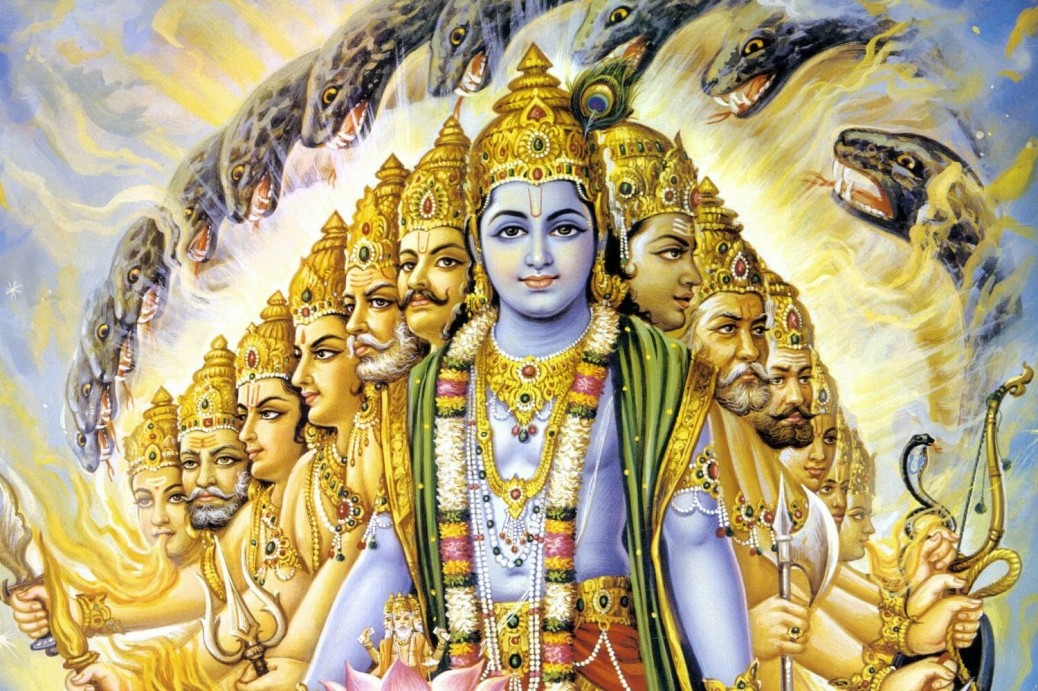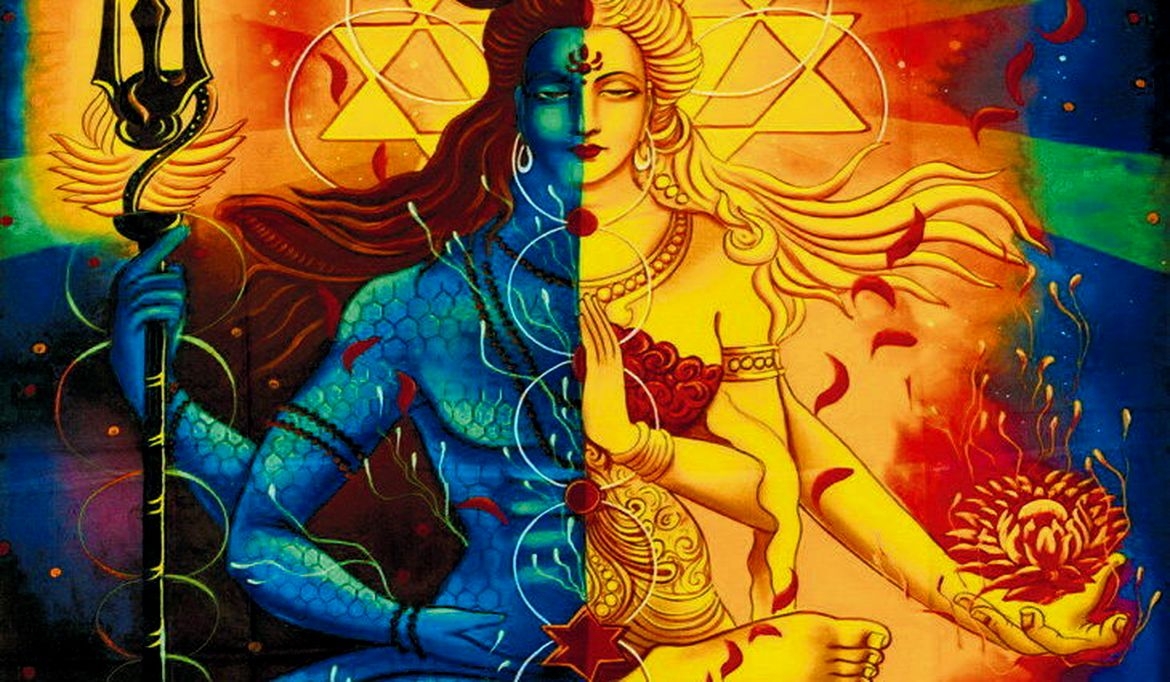United We Stand – In Gita Verse 1.15 Hrishikesh blew His conch shell, called Pāñcajanya; Arjuna blew his, the Devadatta; and Bhīma, the voracious eater and performer of herculean tasks, blew his terrific conch shell, called Pauṇḍra.
In this verse from the Bhagavad Gita, Shree Krishna is honoured with the title “Hrishikesh,” denoting his supreme authority over the mind and senses. As the Sovereign Master of everyone’s mental and sensory faculties, Shree Krishna exhibited unparalleled control over his own mind and senses throughout his divine pastimes. The verse further illustrates the Pandavas’ preparedness for battle, as they responded to Bhishma’s call by blowing their conch shells in a hierarchical sequence. Krishna, with his Panchajanya conch, and Arjuna, with his Devadatta conch, communicated messages of transcendental inner strength and stability.
Additionally, Bhima, renowned for his immense physical prowess and formidable deeds, sounded his powerful conch, Paundra. This collective act of blowing their conch shells symbolised their readiness and unity, emphasising the strength derived from mutual trust and respect. The Pandavas’ coordinated actions underscored their collective resolve and the deep bond that fortified their combined might.
The Pandavas’ synchronised response to Bhishma’s call was not merely a ritualistic act but a profound demonstration of their inner resolve and unity. Each conch shell blast was a testament to their collective strength, trust, and unwavering support for one another. This unity was not born out of mere convenience but from a deep-seated respect and mutual understanding. They did not focus on each other’s flaws but rather on each other’s strengths, creating a harmonious and powerful team dynamic. This approach is a clear indication that when individuals focus on strengths rather than weaknesses, they foster an environment of respect and collective growth. Recognising and appreciating each other’s strengths is a testament to respecting the universe’s inherent imperfections and understanding that everyone has a unique role to play.
A historical parallel to this unity can be seen in the Indian struggle for freedom. Despite the British Empire’s formidable power and control, the collective strength and unity of the Indian people eventually led to their independence. Various leaders with different ideologies inspired a massive movement that shook the foundations of British rule. The unity and collective effort of millions of Indians, standing together against tyranny, ultimately led to the British relinquishing control. This historical example underscores the power of unity and collective action. If only a handful of individuals had risen against the British, their efforts would likely have been in vain. However, the mass involvement and solidarity of the Indian people made their struggle successful.
Unity is deeply ingrained in Indian culture, exemplified by the traditional joint family system. For centuries, Indian families lived together, not just cohabiting but also bonding deeply. This sense of togetherness extended beyond immediate family to neighbours and the extended family network. Such unity provided emotional and psychological support, which is one reason why the incidence of depression and psychological issues has historically been lower in India compared to other parts of the world. Growing up in an environment that values unity and mutual support fosters an innate understanding of the importance of standing together and supporting one another.
The adage “United we stand, divided we fall” encapsulates the essence of working collaboratively. It is far more effective to stick together and support each other than to work in opposition. Teamwork is a reliable path to success, as demonstrated by the Pandavas in the Mahabharata. Despite their limited resources and financial constraints following their exile, their unity enabled them to triumph in the war. In contrast, the Kauravas, with their abundant resources and power, were defeated due to their lack of unity. Duryodhana was perplexed by the Pandavas’ ability to remain united despite their differing perspectives. The key difference lay in Yudhishthira’s leadership; he listened to his brothers and gave them the freedom to express themselves and act, fostering a sense of responsibility and unity. Conversely, Duryodhana’s authoritarian approach stifled his brothers’ freedom, leading to division and ultimately, their downfall.
In Bhagavad Gita Verse 1.15, the contrasting manner in which the Kauravas and Pandavas blew their conches serves as a symbolic reflection of their underlying principles. The Kauravas’ actions reveal a lack of teamwork, while the Pandavas’ actions exemplify unity. This distinction underscores the profound importance of unity, mutual respect, and collective strength.
These principles are not only significant in the context of the ancient epic but also hold timeless relevance. From the Indian freedom struggle to contemporary scenarios, the values of unity and collaborative effort have consistently proven to be essential for achieving common goals and overcoming challenges.
Tags: United We Stand




